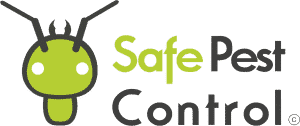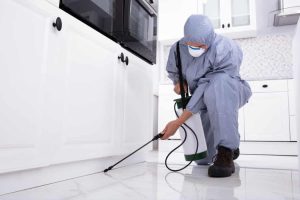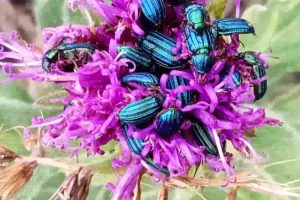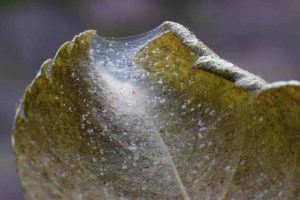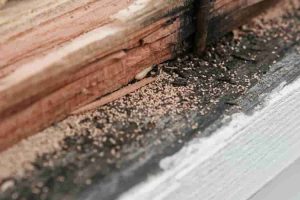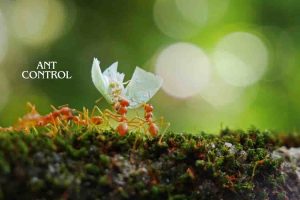Ensuring food safety in food processing plants is a top priority. Effective pest control strategies are essential to maintaining a sanitary and safe facility. Without proper pest management, food products are at risk of contamination, leading to possible health hazards.
To tackle this issue, we must first identify common pests and implement integrated pest management (IPM) principles. This includes using safe and approved methods to control pests and ensuring our facility adheres to all industry regulations. By maintaining cleanliness and monitoring for signs of pests, we can significantly reduce the risk of infestation.
In addition to these strategies, we need to use physical barriers like mesh screens and weather strips to prevent pests from entering the facility. Regular inspections and timely interventions are key to keeping our food processing environment free from pests. By prioritizing these measures, we protect both our products and consumers, assuring the highest standards of food safety.
Understanding Pest Control in Food Processing
Effective pest control is crucial in food processing plants to prevent contamination and ensure food safety. We will cover why pest management matters, which pests are common in these facilities, and the core principles of Integrated Pest Management (IPM).
Significance of Pest Management
Pest management is vital in maintaining the integrity and safety of food products. Pests such as insects and rodents can contaminate food, leading to serious health risks. They can also cause significant financial losses due to damaged goods and unsanitary conditions.
Food processing plants must adopt rigorous pest control measures to comply with health regulations and standards set by organizations like the National Pest Management Association. Regular inspections, monitoring, and proactive measures are key to preventing infestations and ensuring a safe production environment.
Common Pests in Food Facilities
Food processing facilities often face threats from various pests, including cockroaches, flies, ants, and rodents. Cockroaches, for instance, are known for spreading bacteria that can contaminate food and surfaces. Flies can transfer pathogens from unsanitary areas to food.
Rodents not only cause physical damage by gnawing through packaging and wiring but also leave behind droppings that pose serious health risks. Ants, particularly those that invade in large numbers, can quickly become a significant problem by contaminating food.
Principles of Integrated Pest Management (IPM)
Integrated Pest Management (IPM) encompasses a combination of methods to manage pests effectively while minimizing risks to humans and the environment. Key principles include:
Exclusion: Creating physical barriers to prevent pests from entering facilities. This includes installing mesh screens on windows and doors, and ensuring doors have weather strips or air curtains.
Sanitation: Keeping the facility clean and free of food and water sources that attract pests. Regular cleaning schedules and proper waste management are crucial.
Monitoring: Regular inspections to detect early signs of pest activity. This allows for timely intervention before infestations become severe.
Control Methods: Using a combination of physical traps, biological controls, and, when necessary, chemical treatments. The focus is on safe and effective methods that reduce reliance on harmful chemicals.
By adhering to these principles, we can effectively manage pest populations and maintain a high standard of food safety in processing plants.
Preventive Strategies and Food Industry Standards
Maintaining food safety in processing plants involves strict adherence to sanitation, physical barriers, and regulatory requirements. These steps are essential to prevent contamination and ensure the safety of consumers.
Sanitation and Hygiene Best Practices
Ensuring clean environments is crucial. We must follow sanitation guidelines that include regular cleaning schedules and proper waste disposal. Frequent sanitation of equipment, floors, and counters prevents pest infestations. Proper storage of food and raw materials is essential to avoid creating habitats for pests.
Employees should follow strict hygiene practices, such as regular hand washing and using clean clothing. Training staff on cleaning methods and monitoring compliance ensures that the facility remains free of pests. We use chemicals approved by the FDA and Codex Alimentarius to maintain a pest-free environment.
Physical Barriers and Exclusion Techniques
Creating physical barriers stops pests from entering the facility. We install mesh screens and weather strips on windows and doors to block pests. Self-closing doors, double doors, and air curtains are used to limit pest entry points.
We place pest control devices strategically. Ultraviolet insect killers are installed away from food preparation areas to prevent contamination. Regular checks and maintenance of these barriers keep them effective. Keeping doors closed when not in use also helps maintain a pest-free environment.
Regulatory Compliance and Documentation
Adhering to regulations like the Food Safety Modernization Act (FSMA) and Food Standards Code is vital. We ensure regulatory compliance by following all pest control guidelines. This involves documenting pest sightings, control measures, and corrective actions.
Regular audits and inspections by authorities help us stay compliant. Detailed records of pest control activities provide transparency and accountability. By adhering to these guidelines, we ensure that our food processing plant meets all safety standards, protecting both our business and consumers.
Using these strategies effectively helps us maintain a safe and sanitary food processing environment, ensuring compliance with industry standards.
Monitoring, Identification, and Control Procedures
Ensuring food safety in food processing plants involves regular inspections, precise identification of pests, and careful handling of pesticides. Each of these steps is crucial to maintain a safe and sanitary environment.
Regular Inspections and Monitoring
We begin by performing regular inspections of both internal and external areas. Monitoring should focus on areas where pests are likely to enter or thrive. This includes inspecting doorways, windows, and any gaps or cracks in the building structure.
Tips for Effective Monitoring:
- Inspect storage areas frequently.
- Use traps and monitoring devices.
- Document pest sightings and activity.
Regular monitoring helps us stay ahead of potential infestations and allows for timely interventions.
Identification of Pests and Risk Assessment
Accurate identification is critical for effective pest control. By recognizing the specific type of pest, we can tailor our control methods to be more effective. For instance, the techniques we use for rodents will differ from those for insects.
Steps for Identifying Pests:
- Examine damage or signs of pests.
- Use identification guides or consult experts.
- Assess the risk level based on pest type and infestation size.
Conducting a risk assessment helps us understand the potential impact on food safety and prioritize our control efforts accordingly.
Pesticide Usage and Handling
When necessary, we employ pesticides to control pest populations. It’s essential to use them correctly to avoid contamination and ensure the safety of the food products. Only certified personnel should handle pesticides, and they must follow all safety protocols.
Guidelines for Safe Pesticide Use:
- Select pesticides approved for use in food processing areas.
- Follow the manufacturer’s instructions and safety guidelines.
- Store pesticides securely and away from food products.
By adhering to these procedures, we create a safer environment for food production and protect against pest-related contamination.
On-Time Service

5 STAR SERVICE BASED ON 100+ GOOGLE REVIEWS
PET & FAMILY FRIENDLY TREATMENT

ALL YEAR-ROUND PROTECTION
Take Back Control Now
8
REASON TO CHOOSE SAFE PEST CONTROL
- Guarantee protection all year-round
- 30 Years Collective Experience
- An impeccable reputation across Sydney's Suburbs
- Certified treatments & written Warranty On all work carried out
- Family Owned & Operated
- Rated #1 Pest Control In Sydney NSW
- No Mess, No Smell
- Family & Pet Friendly Treatments
REQUEST A QUOTE
